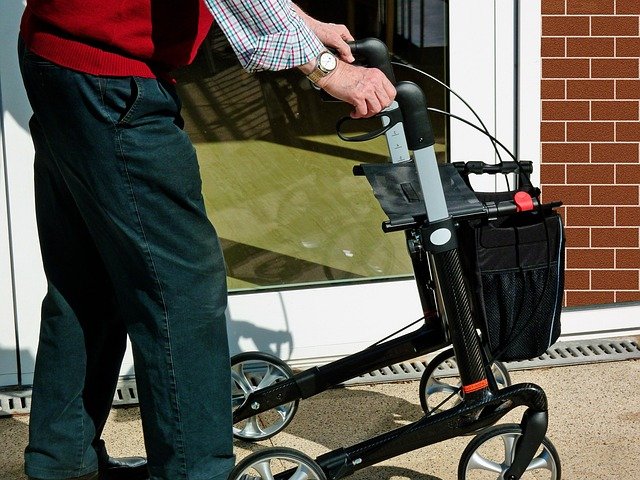Preparing Caregivers for Remote Rehabilitation Support
As remote rehabilitation expands, caregivers increasingly act as essential partners in delivering virtual care. Effective preparation combines practical skills, clear communication, and access to appropriate technology so caregivers can support rehabilitation goals, encourage adherence, and help monitor progress safely and confidently.

Remote rehabilitation changes how therapy and long-term care are delivered, and caregivers often become the bridge between clinical teams and patients. This article explains how to prepare caregivers for remote support in rehabilitation contexts, emphasizing practical training, workflow integration, and safeguards that maintain privacy and accessibility. It covers telemedicine workflows, virtual care roles, chronic care considerations, wearable monitoring, wellness and prevention techniques, and the privacy and security practices caregivers need to adopt.
This article is for informational purposes only and should not be considered medical advice. Please consult a qualified healthcare professional for personalized guidance and treatment.
How can telemedicine support caregivers?
Telemedicine platforms enable clinicians to perform assessments, adjust treatment plans, and coach caregivers remotely. Preparing caregivers means familiarizing them with common telemedicine functions: joining video visits, positioning cameras to show movement or wounds, sharing symptom logs, and coordinating follow-up. Training should include troubleshooting connectivity issues and understanding when a virtual visit is inadequate and an in-person evaluation is needed. Clear role definitions reduce uncertainty and improve the usefulness of remote consultations.
What does virtual care mean for rehabilitation?
Virtual care in rehabilitation extends therapy into the home and often relies on caregiver facilitation. Caregivers may need to assist with exercise setup, cueing movement, and documenting performance. Practical training sessions—ideally led by therapists via video—can teach safe transfer techniques, adaptive equipment use, and how to scale exercise intensity. Establishing simple checklists or video libraries tailored to the patient’s plan helps caregivers reinforce clinical goals between professional sessions and supports continuity of care.
How to manage chronic care and promote adherence?
Chronic care requires consistent routines and medication or therapy adherence. Caregivers can be coached in scheduling routines, recognizing early signs of deterioration, and using reminders or pill organizers. Behavioral strategies—such as setting small achievable targets, positive reinforcement, and linking exercises to daily activities—improve adherence. Remote care plans should include regular, structured reviews so clinicians can monitor progress and modify interventions without placing undue burden on caregivers.
How can wearables and remote monitoring help?
Wearables and remote monitoring tools provide objective data on activity, heart rate, sleep, and other metrics relevant to rehabilitation and chronic care. Caregivers should be trained to set up devices, perform basic maintenance (charging, syncing), interpret key indicators, and transmit reports to clinicians securely. Emphasize recognizing device alerts and when to escalate concerns. Selecting user-friendly devices and providing simple guides reduces technical friction and increases the probability that monitoring will inform care decisions.
How to integrate wellness and prevention strategies?
Prevention and wellness are central to long-term rehabilitation outcomes. Caregivers can support nutrition, fall prevention, and gradual activity progression. Practical steps include adapting the home environment to reduce hazards, encouraging safe mobility practices, and incorporating short, frequent activity breaks that align with therapy goals. Remote resources—such as guided exercise videos, printable safety checklists, and caregiver support groups—can reinforce preventive measures and reduce caregiver isolation.
How to address accessibility, privacy, and security?
Accessibility means ensuring that technology and materials match the caregiver’s language, literacy, and device capabilities. Offer multiple formats (video, text, pictograms) and simple user guides. Privacy and security are critical: caregivers should understand consent for sharing health information, secure use of video platforms, and safe handling of devices that collect personal data. Clinicians must choose platforms that meet regulatory standards where applicable and provide clear instructions for secure login, password management, and recognizing phishing attempts.
Caregiver preparation should be iterative and personalized. Initial onboarding can cover core skills, and follow-up coaching can address specific challenges as they appear. Teams should document remote care workflows, set expectations about frequency of contact, and ensure caregivers have quick access to clinicians for urgent questions. Simulation or role-play in supervised virtual sessions can increase caregiver confidence and decrease the risk of errors.
Conclusion Preparing caregivers for remote rehabilitation support requires a combination of technology familiarization, hands-on training, behavioral strategies to support adherence, and clear protocols for privacy and escalation. When caregivers are equipped with practical skills, easy-to-use monitoring tools, and reliable communication channels with clinicians, remote rehabilitation can be safer, more effective, and more sustainable for people receiving long-term care.





